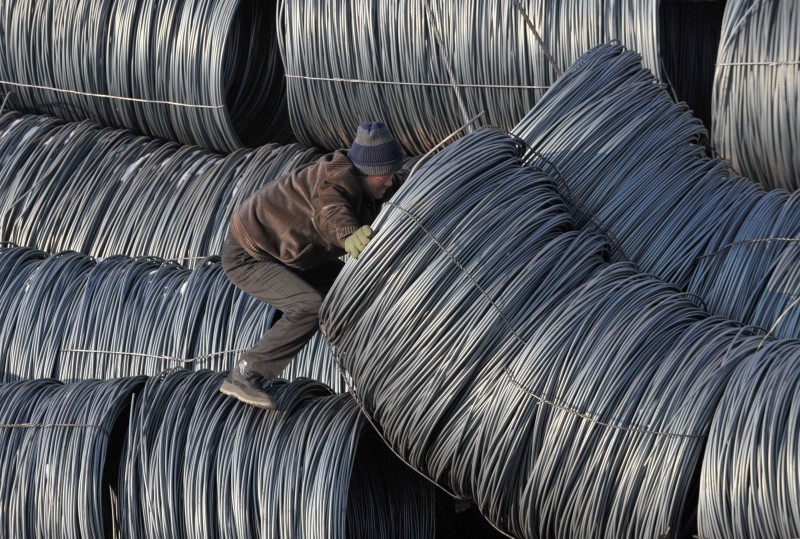(The opinions expressed here are those of the author, a columnist for Reuters.)
By Clyde Russell
LAUNCESTON, Australia, April 3 (Reuters) - China's appetite for iron ore is likely to have continued unabated in March, but it seems increasingly likely that the first quarter of 2017 may prove to be as good as it gets this year for imports of the steel-making ingredient.
China imported 90.3 million tonnes of iron ore in March, according to vessel-tracking and port data compiled by Thomson Reuters Supply Chain and Commodity Forecasts.
If the estimate is matched by official customs figures, due next week, it will be only the fifth time that monthly imports have exceeded 90 million tonnes, the other occasions being January this year, November and September last year and in December 2015.
The vessel-tracking and port data is typically more conservative than customs data, undercounting by 3.5 percent over 2016, meaning that the risk is that March imports are higher than suggested by the data.
China's imports of iron ore in the first quarter of 2017 have been robust, mainly on the back of strong steel prices and optimism about the resilience of the construction and infrastructure sectors, the main steel consumers.
But there are already signs that the market is realising it got ahead of itself, with spot iron ore prices .IO62-CNO=MB ending last week at $80.39 a tonne, down 15 percent from the peak this year on Feb. 21.
The spot price is now virtually flat from the $78.87 at the end of last year, showing that the rally from December 2015 to February, which resulted in prices more than doubling, is starting to unwind.
Much of the focus on why the price gains were unsustainable has been on the rapid build-up of iron ore inventories at Chinese ports, with industry consultants SteelHome saying stockpiles at 46 ports SH-TOT-IRONINV reached a record 132.5 million tonnes in the week to March 31.
This is some 65 percent higher than the 80.5 million tonnes recorded in October 2015, just prior to the start of the strong rally in prices.
While an overhang of inventories was always likely to eventually cause prices to stumble, it also means that imports may be subdued in the coming months as traders and steel mills work through some of the stockpiles.
STEEL DRAG
Chinese steel demand may also become a headwind for iron ore imports and prices, with the China Metallurgical Industry Planning and Research Institute estimating it will drop to 660 million tonnes in 2017, a decline of 1.9 percent from 2016.
"We think China's steel consumption will decrease step by step by step -- maybe increase some years, like last year. That's our situation," Li Xinchuang, the institute's president, told an industry conference in Perth on March 30. a decline in domestic demand, coupled with likely lower steel exports, would likely lead to steel mills lowering output, thereby cutting their need for imported iron ore.
China's steel exports were 13.17 million tonnes in the first two months of 2017, down 25.7 percent from the same period last year.
If this pace is maintained for the rest of the year, steel exports will reach around 80 million tonnes, well below the 108.5 million recorded in 2016.
Steel prices in China are also feeling the pressure of possible lower domestic demand and exports, with the benchmark Shanghai rebar contract SRBcv1 , ending last week at 3,166 yuan ($459.50) a tonne, down 6.2 percent from its recent closing peak on March 15.
For iron ore, it appears the combination of a softer demand outlook and record high inventories is finally weighing down prices.
While this has yet to show up in China's imports of iron ore, the risk is that these too start to moderate from the breakneck pace seen in the first quarter.
<^^^^^^^^^^^^^^^^^^^^^^^^^^^^^^^^^^^^^^^^^^^^^^^^^^^^^^^^^^^ GRAPHIC on China iron ore imports vs price
http://tmsnrt.rs/2nMEfoV
^^^^^^^^^^^^^^^^^^^^^^^^^^^^^^^^^^^^^^^^^^^^^^^^^^^^^^^^^^^> (Editing by Joseph Radford)
